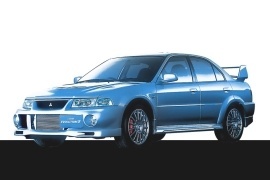The sixth generation of the Lancer Evolution was more of a leap than a step ahead of its predecessor.
A new drivetrain made a big difference.
The World Rally Championship was at its heights in the late ’90s. Seven official factory teams gathered points for the final chart. Mitsubishi introduced the new car and it ended in fourth place. But it was six times on the podium and had a victory in the inaugural race, at Monte Carlo. The new Lancer Evolution WRC was based on the EVO VI model. It was rough, hard to control, and with new technologies that were difficult to understand by the drivers.
From the outside, the outrageous looking hood with extracting air-vents, the huge and flat apron for the intercooler, and the straight-cut headlights give the others a clue about what lies under the car. The big adjustable wing in the back was fully functional, adding aerodynamic load at high speeds.
Inside, the base model was basic. The cheapest seats, no AC, no radio, no power windows, and available only with steel wheels and white. It was built for private rally teams from around the world. The top trim levels offered Recaro sport-bucket seats and all the comfort for a quick car. The special TME (Tommi Makinen Editon) featured a special painting scheme, that mimicked the rally car.
The Lancer Evo VI was fitted with a 2.0-liter engine that offered, officially, 280 hp. It was mated to a 5-speed manual. The all-wheel-drive system featured a limited-slip differential in the back and an intelligent center differential. That was the biggest difference when compared to the Evo V. And, of course, nobody believed that a 280 hp sedan could get a 0-100 kph (0-62 mph) in 4.4 seconds.

























































